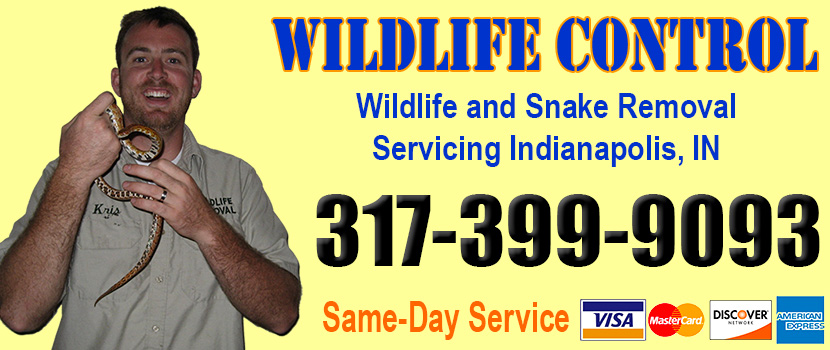
Welcome to indianapolissnakes.com! I am David, a snake enthusiast living in Indianapolis, IN. Many people don't know that Indianapolis is in fact full of snakes! You just need to know where to find them - they can often be shy and elusive. Some Indiana snake species are more common outside of the city limits, in different parts of Marion County IN, but many types of snakes are indeed common in the more urban parts of Indianapolis. This guide is meant to help educate you about the beautiful snakes of Indianapolis, and to help you identify the most common snakes of Indianapolis, as well as the venomous snakes of Indianapolis that you should learn to recognize and avoid. If you want more detail, click here for my complete list of ALL snake species in Indianapolis. Remember the following:
- Most snakes of Indianapolis are harmless and don't want to encounter you
- Venomous snakes exist but are uncommon in Indianapolis, Indiana
- Snakes eat rats and mice and are a valuable part of the Indiana ecosystem
- Never kill a snake - if you leave a snake alone, it will leave you alone.
Common Snake Species in Indianapolis
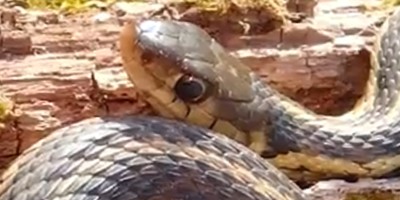 Garter Snakes:
The cottonmouth, or water moccasin, is arguably the most dangerous snake found in Indiana. Deriving its name from its distinctive white mouth, the cottonmouth is mainly an aquatic snake, preferring to be near water. However, there are many instances where they have been found in urban areas and on dry land. These snakes are anywhere from two to six feet long and have a very dark-colored body, generally a dull olive or brown. They eat fish, rodents, amphibians, and other snakes. They can be extremely harmful to humans, so it is always important to be aware of them.
Garter Snakes:
The cottonmouth, or water moccasin, is arguably the most dangerous snake found in Indiana. Deriving its name from its distinctive white mouth, the cottonmouth is mainly an aquatic snake, preferring to be near water. However, there are many instances where they have been found in urban areas and on dry land. These snakes are anywhere from two to six feet long and have a very dark-colored body, generally a dull olive or brown. They eat fish, rodents, amphibians, and other snakes. They can be extremely harmful to humans, so it is always important to be aware of them.
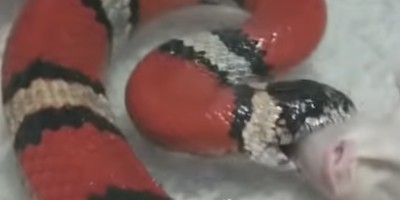 Milk Snakes:
The eastern milk snake is very common throughout Indiana and can be found in urban areas, as well as secluded forests. These snakes feature a pale tan or gray background with copper or brown colored splotches along their bodies. Milk snakes are usually two to three feet in length and mainly feed on rodents and amphibians. They get their name from the fact that they used to live in dairy barns and other rodent-infested areas. The eastern milk snake is harmless to humans, as it is non-venomous, though it can leave a painful bite if handled.
Milk Snakes:
The eastern milk snake is very common throughout Indiana and can be found in urban areas, as well as secluded forests. These snakes feature a pale tan or gray background with copper or brown colored splotches along their bodies. Milk snakes are usually two to three feet in length and mainly feed on rodents and amphibians. They get their name from the fact that they used to live in dairy barns and other rodent-infested areas. The eastern milk snake is harmless to humans, as it is non-venomous, though it can leave a painful bite if handled.
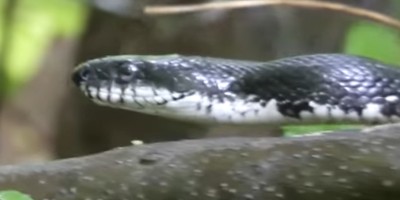 Rat Snakes:
The black rat snake, also called the eastern rat snake, is one of the larger snakes found in Indiana. They usually have black bodies with white necks. These snakes have a diet that consists of a variety of creatures, such as rodents, birds, amphibians, and sometimes even fish. The eastern rat snake can be two to eight feet long and possesses the ability to climb a variety of structures. They are commonly found in urban areas, as all they need is access to rodents or some other food source to survive. These snakes will not harm humans, as they are non-venomous, although they can cause a pretty painful bite if cornered or threatened.
Rat Snakes:
The black rat snake, also called the eastern rat snake, is one of the larger snakes found in Indiana. They usually have black bodies with white necks. These snakes have a diet that consists of a variety of creatures, such as rodents, birds, amphibians, and sometimes even fish. The eastern rat snake can be two to eight feet long and possesses the ability to climb a variety of structures. They are commonly found in urban areas, as all they need is access to rodents or some other food source to survive. These snakes will not harm humans, as they are non-venomous, although they can cause a pretty painful bite if cornered or threatened.
Venomous Snake Species in Indianapolis
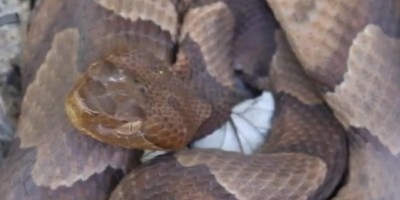 Copperheads:
Copperheads are a mid-sized venomous snake that is found in the lower third of Indiana. Though they typically stay south of Indianapolis, they have been found farther north on occasion. These snakes are generally two to three feet in length and get their name from their copper-colored head. In addition, their bodies have a light copper color background and darker copper color bands. While their venom can cause death in humans, it rarely does, as most copperhead bites are dry, meaning there is no venom injected. Copperheads live in many environments, including urban areas, and subsist on a diet of rodents, other snakes, and amphibians.
Copperheads:
Copperheads are a mid-sized venomous snake that is found in the lower third of Indiana. Though they typically stay south of Indianapolis, they have been found farther north on occasion. These snakes are generally two to three feet in length and get their name from their copper-colored head. In addition, their bodies have a light copper color background and darker copper color bands. While their venom can cause death in humans, it rarely does, as most copperhead bites are dry, meaning there is no venom injected. Copperheads live in many environments, including urban areas, and subsist on a diet of rodents, other snakes, and amphibians.
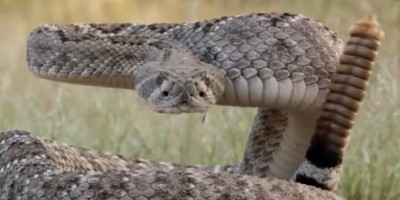 Rattlesnakes:
In Indiana, there are two types of rattlesnakes. The timber rattlesnake is a large rattler, generally between three and six feet in length. It has a distinctive light olive or tan background with dark brown or black bands around it. The massasauga rattlesnake is a smaller rattlesnake, generally around two to three feet in length. The massasauga has a light tan or olive background with dark brown or olive splotches all down its body. Both of these species can thrive in many environments, and sometimes make their way into urban areas. Both species have very toxic and dangerous venom, so it is important to be cautious around them. These rattlesnakes like to eat rodents, other snakes, birds, and amphibians.
Rattlesnakes:
In Indiana, there are two types of rattlesnakes. The timber rattlesnake is a large rattler, generally between three and six feet in length. It has a distinctive light olive or tan background with dark brown or black bands around it. The massasauga rattlesnake is a smaller rattlesnake, generally around two to three feet in length. The massasauga has a light tan or olive background with dark brown or olive splotches all down its body. Both of these species can thrive in many environments, and sometimes make their way into urban areas. Both species have very toxic and dangerous venom, so it is important to be cautious around them. These rattlesnakes like to eat rodents, other snakes, birds, and amphibians.
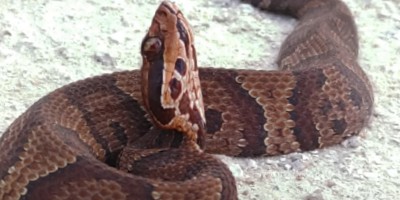 Cottonmouth:
The cottonmouth, or water moccasin, is arguably the most dangerous snake found in Indiana. Deriving its name from its distinctive white mouth, the cottonmouth is mainly an aquatic snake, preferring to be near water. However, there are many instances where they have been found in urban areas and on dry land. These snakes are anywhere from two to six feet long and have a very dark-colored body, generally a dull olive or brown. They eat fish, rodents, amphibians, and other snakes. They can be extremely harmful to humans, so it is always important to be aware of them.
Cottonmouth:
The cottonmouth, or water moccasin, is arguably the most dangerous snake found in Indiana. Deriving its name from its distinctive white mouth, the cottonmouth is mainly an aquatic snake, preferring to be near water. However, there are many instances where they have been found in urban areas and on dry land. These snakes are anywhere from two to six feet long and have a very dark-colored body, generally a dull olive or brown. They eat fish, rodents, amphibians, and other snakes. They can be extremely harmful to humans, so it is always important to be aware of them.
If you're unsure, you can email me a photo of the snake at info@indianapolissnakes.com and I will email you back with the snake's species. If you found a snake skin, read my Found a Skin? page, and you can email me a photo of the skin, and I'll identify the snake for you. If you need professional Indianapolis snake removal help, click my Get Help page, or see the below website sponsor I found, who provides that service.
Remember, the term is not poisonous snakes of Indianapolis, it's venomous snakes of Indianapolis. Poison is generally something you eat, and venom is injected into you. That said, dangerous snakes are very rare in Indianapolis. The few venomous snakes of Marion County are rarely seen. But they are commonly misidentified, so learn about all the snake species of Indianapolis in order to correctly identify them. These snakes are usually also found in the surrounding towns of Beech Grove, Lawrence, Southport, Speedway, Homecroft, Clermont, Rocky Ripple, Warren Park, Meridian Hills, Williams Creek, Spring Hill, Wynnedale, North Crows Nest, Crows Nest, and the surrounding areas.
Read our article about:
Comprehensive Guide on the Banded Water Snake
indianapolissnakes.com domain and hosting costs made possible by the generous support of this sponsor:
